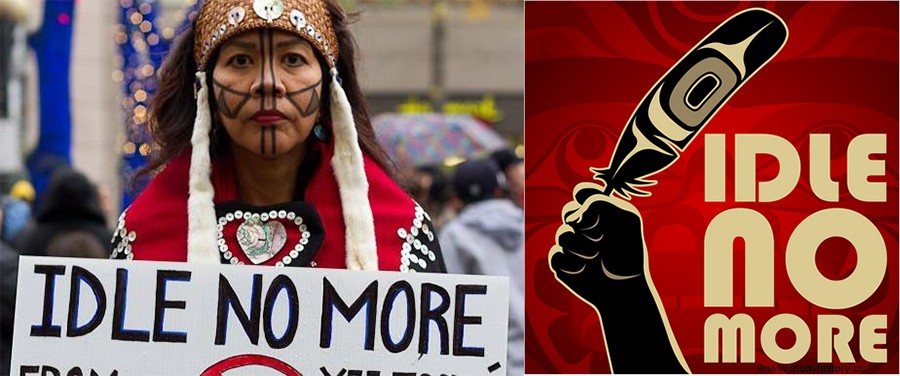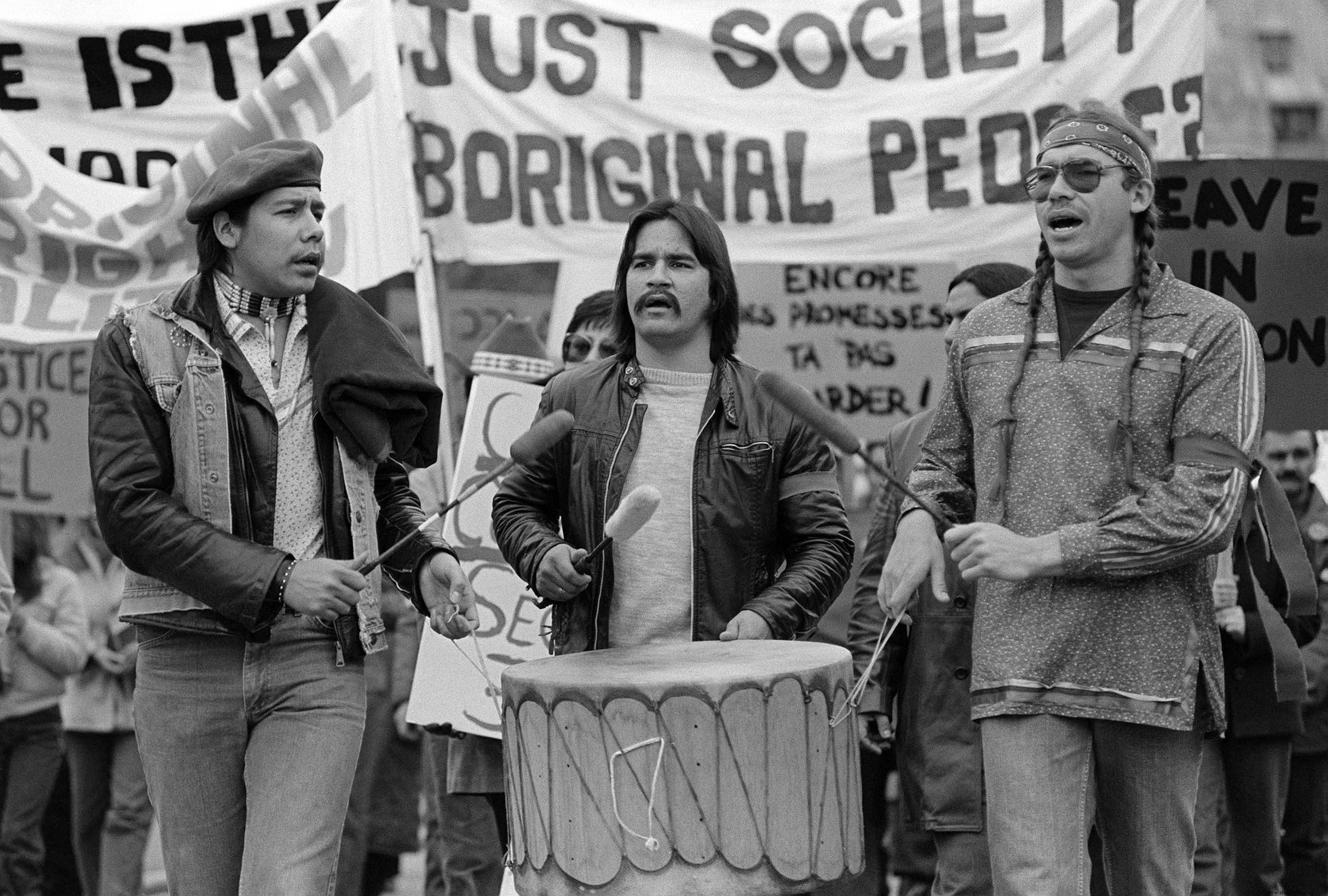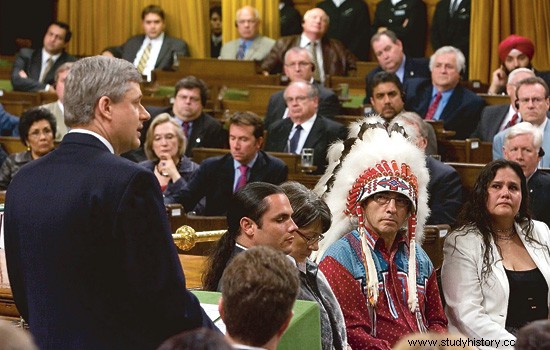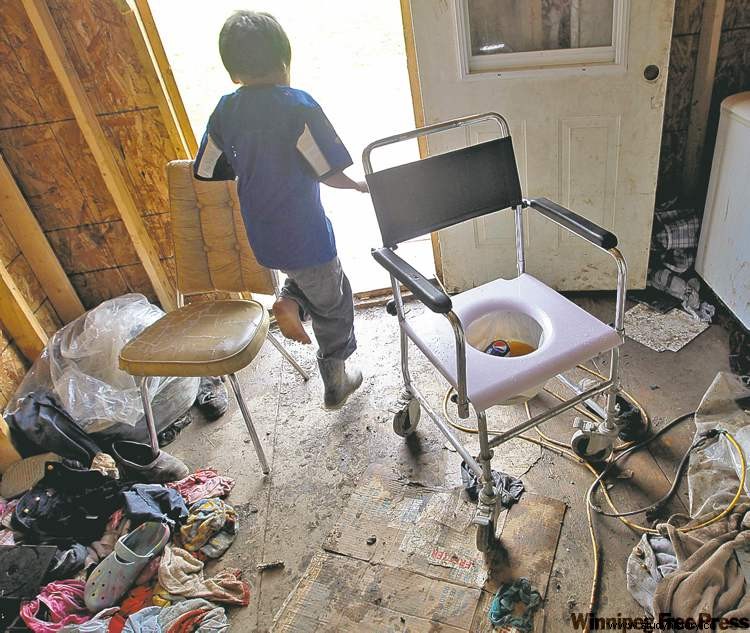Do you know about the cultural genocide of indigenous peoples in Canada? This is a story about the dark side of Canadian history.
Thousands of years before the colonization took place, the indigenous national people now lived in the country. Historically, however, the government's treatment of indigenous peoples has made them outsiders in their own nation.
"Peace, order and good governance" The Canadian motto seems to have failed the indigenous people of the province. Even the House of Parliament of Canada is located in the traditional territory of Algonquin.
Modern times and better access to knowledge gave rise to awareness of the suffering of indigenous peoples. This creates movements and protests aimed at improving conditions for the first humans.
Consciousness Movements -
-

- at idle no more
Awareness initiatives have begun to gain more recognition over the last half century. There has been a rapid increase in the number of organizations in support of indigenous peoples. The government has begun to recognize the first people and their rights, new treaties have been concluded, and some crucial legal changes have also been made to the constitution.
Government changes are not easily achieved. In the last half century, there has been one after another press assistance and protests. One of the latest protests includes the Idle No More movement, which started in 2012 and is still ongoing.
The Truth and Reconciliation Commission (2008-2015) admitted the mistakes of previous Canadian leadership in ensuring the safety of indigenous peoples. One of the most important events was the national survey on missing and killed indigenous peoples and girls (2016-present). It shook the nation to the core of the terror that was unleashed in the form of truth.
In 2017, a nationwide celebration was announced for the 150th anniversary of Canada's anniversary as a nation. According to the nation's indigenous people, however, the idea of the nation existed long before the European colonization that led to the current government.
Deletion of Indigenous Peoples in Canada
-

- by the guardian
First Nations, Inuit and Métis are three different types of indigenous peoples recognized by the Canadian Constitution.
The first people of the nation are mentioned in the Constitution of Canada as indigenous peoples or historically known as "Indians".
It is currently considered rude to use Aboriginal or Indian terms, but indigenous peoples and the first humans are acceptable terms.
Have you ever heard of Eskimos? Well, the term is not used now. Inuk for a single person and Inuit as a multiple are used to address. These are the people who originally came from the Arctic region of North America.
The last type is mixed blood, which arose as a cause of mixing between Europeans and indigenous peoples. The fur trade enabled marriage and cultural mixing between the two.
The slow but systematic erosion
While the indigenous population only lived in the areas of the tribes, the population density at that time was not as it is now. What you need to know to understand the statement is currently the first people in the nation who make up barely 4.9% of the country's population.
In 1867, the new nation may have been created, but the policies and treaties of the Europeans considering the indigenous people were adopted just as. The Royal Proclamation of 1763 and the Treaty of Niagara in 1764 indicated that indigenous peoples could not be exploited without their consent.
The treaties provided a measure of sovereignty for the first people. The Canadian government seemed to include the treaties in its constitution in theory, in practice, actions were a stark contrast to the same. Let me give you an example for clarification.
Sir John A. Macdonald, the nation's very first Prime Minister, proposed a national policy. This policy focused on the migration of indigenous peoples in western regions, away from their home countries. It creates a stark contrast to the written policy of offering a measure of sovereignty to the first humans.
The Indian reservations were to be protected lands, especially under the rule of indigenous peoples. These areas were not really offered the protection as mentioned, rather the government cut it bit by bit while offering minimum value for these pieces of land. Most of the land was sold to private sectors for mining and other purposes. The indigenous people, the indigenous communities in the region were not offered proper redress.
Indian Law:
-

- by medium.com
A significant amount of changes were made to the nation's policies through this law. It was a collection of all the regulations related to the first humans.
The law came into force in 1876. It was an order without input from the indigenous people. The law brought the first humans into the nation's regulations, without their consent.
Although the name of the law has been on "Indigenous &Northern Affairs Canada", it is still in force.
It began by keeping the "Indians" (people of the first nation) under its influence. However, I'm 1939, expanding it to include the Inuit people (formerly called Eskimos) among themselves.
Indian law was a measure to allegedly "assimilate indigenous peoples into the Canadian way of life". Although the statement itself seems innocent enough, the meaning is behind what you need to understand.
Broken culture and suffocated sovereignty
-

- by history.com
First came the regulations on the entry into indigenous reserves, then came "indigenous agents" who monitored the activities of indigenous peoples.
The regulations were so strict that it seems as if they were designed to shatter any sovereignty and cultural identity that set them apart from other Canadians.
For no apparent reason, even some cultural events, as well as the clothing of indigenous peoples, were banned. The outfits of the indigenous people were a sign of their free lifestyle.
Potlatch, an ancient cultural custom of the first humans, was limited. Hunting and fishing by indigenous peoples was also banned. If you can see the hints and pitfalls that close in on the first humans, it was a cleverly crafted way to stifle that indigenous culture.
The bans were the government's way of imposing strict restrictions. While the Royal Proclamation of 1763 included in the Canadian Constitution offered indigenous peoples sovereignty in their territories, Indian law imposed restrictions.
Indigenous peoples were regulated through the hereditary hierarchy of antiquity. The new system forced societies to follow the Western system of government, which was under the direct control of the Canadian government.
This was contrary to the supposed sovereignty the nation offers. Indigenous peoples lost their freedom to self-government or independence. Let me tell you about the true picture behind the Canadian motto for peaceful governance. Indigenous peoples did not even get the right to vote until 1960.
You must understand that the nation was established back in 1867. It took almost a century before the government itself offered an election in the governing election to the first people in the nation. They were not even considered Canadians legally until that time.
Deletion of status and "Indians"
-

- by history.com
The status of "Indians" or the minority rights offered to them may be removed at any time through Indian law.
The nature of the "Indian" heritage was enforced with a large gender bias. Any indigenous people who married a non-indigenous people automatically lost their "Indian" status.
"Indianness" was considered a patriarchal feature of Indian law. At least 100,000 people have recently re-applied for their lost indigenous status to the government.
If you want me to sum it up, Indian action policy is aimed at the indigenous identity that set them apart from the rest of the Canadians as a whole.
It was a cleverly planned slow systematic cultural assassination.
This is not a biased review by an author, to prove my point, let me quote the exact words of the Vice President of Internal Affairs for Canada between 1913 and 1932.
Duncan Campbell, the said deputy, declared in his speech in 1920 “I want to get rid of the Indian problem. Our goal is to continue until there is not a single Native American in Canada who has not been absorbed into politics and there is no Indian issue and no Indian branch ”
They came for the children
-

- by the Truth and Reconciliation Commission of Canada
Let me take you on a journey to the dark side of Canadian history. Unreasonable restrictions were enforced by the government on the indigenous people. A cruel plan aimed at the children of the first humans, separating them from their families.
Masked under the veil of education while truly evolving in the face of cultural assimilation.
In a rough count, around 150,000 132 children were forced to attend 20 schools during the time before the system was banned in the final period of the XNUMX number.
The school's curriculum was about giving the children the most basic and least possible education with a focus on more than enough time on activities such as saving logging or even clothes.
A systematic cultural assimilation
This was a system that had been used for a long time by European colonization work. At the time, it was used by missionary schools to assimilate the mixed cultural heritage of European culture.
It was a way of assimilating that brainwashed the future generation into compliance. Participation in the Indian school of status as Indian children was made compulsory Richmond, the indigenous people had no choice but to comply.
Another way of looking at the same situation is that the children were taken from their homes, without their consent or choice. The schools were not about education, while education was of course a supplier, even though it was an elementary level, it was about assimilation.
The children were kept away from their communities. The traditions and customs of indigenous peoples passed down from generation to generation for thousands of areas were cut. Drastically underfunded and overcrowded, the system never intended to provide a good education. Separating children from their traditions at a young age and keeping growth stunted created a gap between old customs and new generations.
According to the Canadian Truth and Reconciliation Commission, more than 3,200 children lost their lives to neglect and abuse during this time. There were also cases of abuse and rape. The last of these schools closed and functioned during 1996. And only then did people begin to understand the true depth of the damage caused by the system.
The people who studied at these schools refer to themselves with the term "survivors from a residential school". While a healing fund may have been issued, and an apology from former Prime Minister Stephen Harper. It was all a little late.
Two Faces of Canadian Politics
-

- by burlington gazzette
Canada is known as a multicultural, tolerant and peaceful country. It has successfully included French and British culture in itself, without harming the other.
It is a place that is known for accepting immigration policy, regardless of the immigrant's origin. When it comes to indigenous policies, however, the nation and the people seem incomprehensible to the clear suffering of the troubled population.
The inviting vision of the farmers in the payslip is a stark contrast to the genocide of the indigenous people that is causing its darker past.
Truth and Reconciliation Commission if Canada aimed to start the process of reconciliation between indigenous and non-indigenous peoples.
Unless the people of Canada accept the dark past that lies behind them, and the fact that their present comforts lie on the backs of oppressed indigenous peoples, the division will not grow.
Major Problems for Indigenous People in Canada:
-

- by winningpress.com
Substandard healthcare-
The health care system in the Indian Reserve is of a barely acceptable standard. The system suffers from overcrowding and lack of maintenance.
Some steps have been taken to improve the health of indigenous peoples, but the situation has not improved much.
If you study it a little deeper, you will see the connection between lower income, social oppression and a higher illness.
Education system-
The Indian housing school system and its consequences continue to haunt the indigenous psyche to this day.
The school system was so oppressive and elementary that about 33.6% of Indigenous Canadians are identified as lacking upper secondary education.
Crowded living conditions-
Indigenous peoples have suffered from overcrowded and inadequate living conditions for so long that it can now be portrayed as a common place in their homes in Canada. In 2011 came a report on the appalling living conditions that indigenous peoples suffer from international attention.
It attracted the attention of the UN and even foreign entities. The report stated that around 44.2% of the people living in Indian reserves, suffer in homes that usually need extreme repairs. Due to continued state supervision, conditions worsened.
Low Income-
There is an income gap of 25% to this date between indigenous and non-indigenous peoples. Low income is one of the major obstacles for indigenous peoples. The reason can be traced back to the housing school system and the oppressive environment against the indigenous population as well.
Every country has a past they are proud of, and a past they desperately want to forget.
But know this, my friend, trying to bury your head in the sand like an ostrich is not the solution. Meeting our demons and accepting the past is the first step to improving the present and building a better future.
With these thoughts in mind, I end this blog here. I hope I've given you enough to think.
